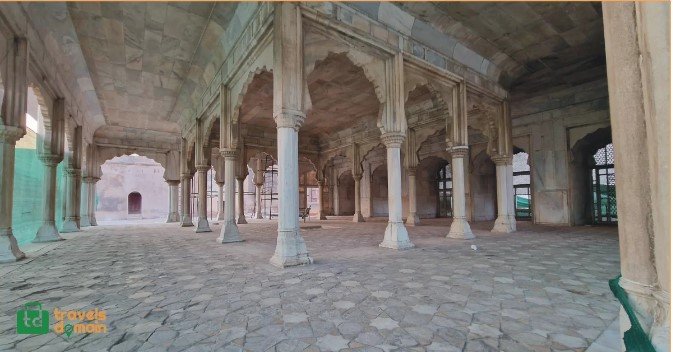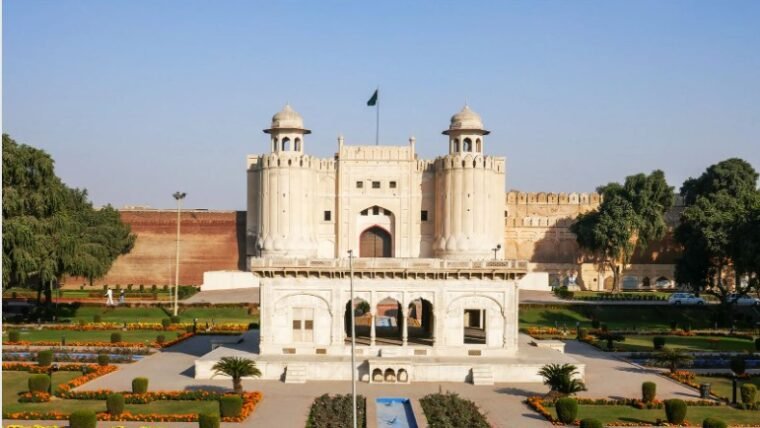Lahore Fort: History and Architecture of an Attraction in Lahore:
Fortresses, which mean stability and security, are built around the world for military purposes or royal residence.
Many forts were built in Pakistan during different periods. For example, Rohtas, Rani Kot, Attock Fort, Drawer Fort, Royal Fort Lahore, etc.
Lahore Fort is a high artificial mound, very high above the city level.
Lahore Fort
Location and Construction:

A fortified site on the south bank of the Ravi River was chosen for the fort. Lahore Fort, also locally known as the Royal Fort, is located in the northwest of the city.
Although the history of this fort goes back to ancient times, it was rebuilt by the Mughal emperor Akbar the Great (1556-1605) while the later generations of Akbar continued to renovate it.
Therefore, this fort is a magnificent example of Mughal architecture and tradition.
Some of the famous places inside the fort include Sheesh Mahal, Alamgiri Darwaza, Nolakha Mahal, and Moti Masjid.
The fort was declared a World Heritage Site by UNESCO in 1981 along with Shalamar Gardens.
There used to be a rough fort here. In 1566, Emperor Akbar demolished it and rebuilt a magnificent fort on the site, which was used for residential as well as military purposes.
Design and Architecture of Lahore Fort:

The fort is 466 meters long and 370 meters wide. Its shape is almost rectangular. The walls are made of red hard bricks made of mud.
There were holes in the walls for the gunmen, from which they used to pour hot water and bullets on the besieging army. Traces of it are still present in the eastern wall.
The exterior of the fort is adorned with beautiful mosaics, depicting humans, horses, and elephants.
Around the fort is a high wall with three large gates, one facing east, the other facing south, and the third facing northwest.
Watch the undiscovered tunnels in Lahore Fort… Conserving and opening soon for the tourists.
By WCLA pic.twitter.com/m1MGwBRSUG— Kamran Lashari (@KamranLashari27) May 31, 2022
The king and his wife used to pass through the northwest gate on elephants. The name of Shah Jahan is also inscribed on this gate.
This door was closed on the orders of the British but on November 20, 1949, the former Governor of Punjab reopened it after three hundred years.
Diwan e Aam & Diwan e Khas:

Inside the fort there is a Diwan, the roof of which is supported by pillars, it is called Diwan Aam.
There is a window in it where Shah Jahan used to sit and visit his subjects.
The Diwan-e-Khas was the royal court of the king, where he met his ministers, advisers, princes, and other kings and maharajas and consulted about the kingdom.
Inside the fort, there is a glass palace which is a masterpiece of architecture and painting.
Even now, if the stitches in a room of Sheesh Mahal are illuminated, the whole room begins to flicker, it is said that it was built by Shah Jahan.
Near Sheesh Mahal is the Moti Masjid, also a fascinating example of architecture, built by Jahangir for the royal wives so that they could offer their prayers in the veil.
When Maharaja Ranjit Singh captured this fort during his reign, he changed the name of Moti Masjid to “Moti Mandir”.

Although the Sikhs took out precious diamonds from the mosque and severely damaged its beauty, they could not harm its grandeur.
Inside the fort, there is also a small museum in which many rare items are preserved, and many cupboards are decorated with old-fashioned tools, weapons, pictures, and clothes.
Even after such a long time has passed, there is no difference in the splendor and splendor of these things.
Every year a large number of domestic and foreign tourists visit this fort from far and wide, especially students can find many things of interest here.
You don’t just have to come here as a student, bring your family and tell your children how the Mughal emperors ruled the subcontinent with great pomp and splendor and left their deep impressions on architecture.
Read Also:
- 5 Beautiful Waterfalls in Islamabad
- Travel Guide to Kumrat Valley: Even the noise of water calms down here
